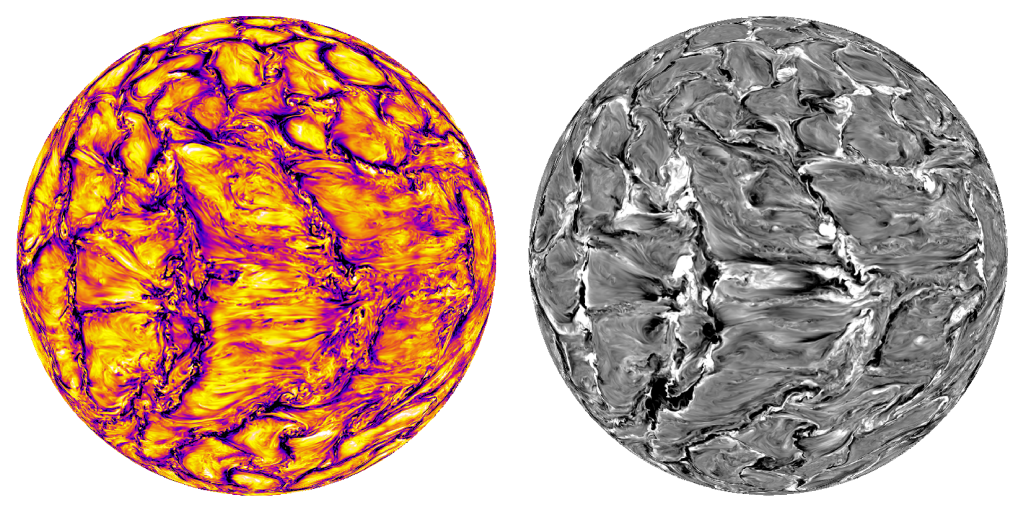Hideyuki Hotta (Chiba University)
More than 400-year sunspot record has revealed that the Sun has 11-year magnetic activity cycle. This is still one of most important unsolved mysteries in the solar physics. Since the solar activity directly affects the solar system, it is important to understand the mechanism of the 11-year cycle in order to understand the space weather.
The 11-year cycle has several global scale sunspot rules such as the butterfly diagram and Hale’s law in spite of turbulent nature of the convection zone. The Hinode satellite has found that the solar convection zone is filled with very efficient small-scale dynamo which has very short time-scale and is able to destroy large-scale magnetic field easily. Recent high-resolution calculations also indicate the destruction of the large-scale magnetic field by the small-scale dynamo. When we increase the resolution, the small-scale motion becomes efficient and this destroys the large-scale magnetic field. In terms of the numerical calculations, the real sun is a super high-resolution fluid. A realistic mechanism(s) to maintain the large-scale magnetic field with large Reynolds numbers is unknown.
In order to address this problem, we carried out unprecedentedly high resolution calculation using K-computer and the Reduced Speed of Sound Technique. Our calculation shows that the large-scale magnetic field is destroyed from low to middle resolutions. This is consistent with previous studies. When we reach unprecedented resolution, the large-scale magnetic field is recovered. In the highest resolution, the small-scale dynamo becomes very efficient and the magnetic energy exceeds the kinetic energy in the small-scale. This strong magnetic field suppresses the small-scale turbulence which previously destroys the large-scale magnetic field. We find an important mechanism to maintain the large-scale magnetic field with large Reynolds numbers.
Hotta, H., Rempel, M., and Yokohama, T. (2016), Large-scale magnetic fields at high Reynolds numbers in magnetohydrodynamic simulations, Science, 351, 6280, 1427-1430
DOI: 10.1126/science.aad1893
http://science.sciencemag.org/content/351/6280/1427

Fig. 1. Radial velocity (left) and radial magnetic field (right) around the top boundary.

Fig. 2. Contours of longitudinally averaged longitudinal magnetic field around the base of the convection zone. The top, middle and bottom panels shows the low, medium, and high resolution calculations.
